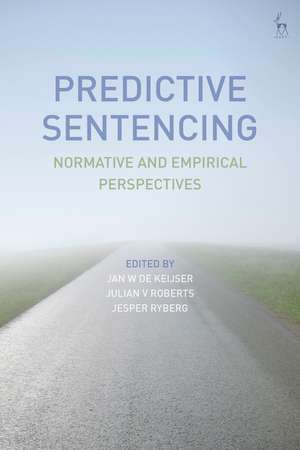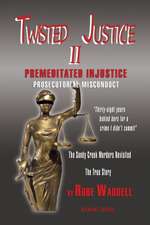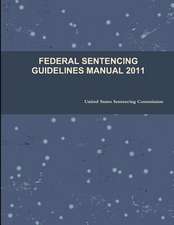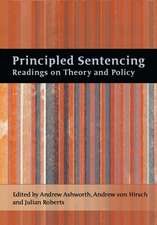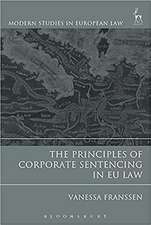Predictive Sentencing: Normative and Empirical Perspectives
Editat de Professor Jan W de Keijser, Julian V Roberts, Jesper Rybergen Limba Engleză Paperback – 16 dec 2020
| Toate formatele și edițiile | Preț | Express |
|---|---|---|
| Paperback (1) | 265.83 lei 6-8 săpt. | |
| Bloomsbury Publishing – 16 dec 2020 | 265.83 lei 6-8 săpt. | |
| Hardback (1) | 541.85 lei 6-8 săpt. | |
| Bloomsbury Publishing – 15 mai 2019 | 541.85 lei 6-8 săpt. |
Preț: 265.83 lei
Preț vechi: 340.58 lei
-22% Nou
Puncte Express: 399
Preț estimativ în valută:
50.87€ • 54.39$ • 42.41£
50.87€ • 54.39$ • 42.41£
Carte tipărită la comandă
Livrare economică 17 aprilie-01 mai
Preluare comenzi: 021 569.72.76
Specificații
ISBN-13: 9781509946082
ISBN-10: 150994608X
Pagini: 320
Dimensiuni: 156 x 234 mm
Greutate: 0.45 kg
Editura: Bloomsbury Publishing
Colecția Hart Publishing
Locul publicării:London, United Kingdom
ISBN-10: 150994608X
Pagini: 320
Dimensiuni: 156 x 234 mm
Greutate: 0.45 kg
Editura: Bloomsbury Publishing
Colecția Hart Publishing
Locul publicării:London, United Kingdom
Caracteristici
An original collection of essays exploring the ethics and consequences of predictive sentencing, with world-leading editors and contributors.
Notă biografică
Jan W de Keijser is Professor of Criminology at the University of Leiden, The Netherlands.Julian V Roberts is Professor of Criminology at the University of Oxford, and Fellow of Worcester College, Oxford.Jesper Ryberg is Professor of Ethics and Philosophy of Law at the Department of Philosophy at Roskilde University, Denmark.
Cuprins
1. Introduction: Normative and Empirical Perspectives on Predictive Sentencing Jan W de Keijser, Julian V Roberts and Jesper Ryberg2. The Use of Risk Assessment in Sentencing Esther FJC van Ginneken3. Why Legal Philosophers (Including Retributivists) Should Be Less Resistant to Risk-Based Sentencing Douglas Husak4. Risk and Retribution: On the Possibility of Reconciling Considerations of Dangerousness and Desert Jesper Ryberg5. Is Preventive Detention Morally Worse than Quarantine? Th omas Douglas6. Against Incapacitative Punishment Zachary Hoskins7. A Defence of Modern Risk-Based Sentencing 7Christopher Slobogin8. Some Dilemmas of Indeterminate Sentences: Risk and Uncertainty, Dignity and Hope Andrew Ashworth and Lucia Zedner9. The Problematic Role of Prior Record Enhancements in Predictive Sentencing Julian V Roberts and Richard S Frase10. Unpacking Sentencing Algorithms: Risk, Racial Accountability and Data Harms Kelly Hannah-Moff at and Kelly Struthers Montford11. The Scientific Validity of Current Approaches to Violence and Criminal Risk Assessment Seena Fazel12. Risk Assessment at Sentencing: The Pennsylvania Experience Rhys Hester13. Predictive Sentencing: An Analysis of Public Views Jan W de Keijser and Sigrid GC van Wingerden14. Sentencing and Prediction: Old Wine in Old Bottles Michael Tonry
Recenzii
The editors of this volume have assembled a distinguished group of scholars whose contributions incisively explore the many issues raised by predictive sentencing. The issues include its fit with standard views about the aims of legal punishment and with related moral concepts such as the rights and dignity of offenders. They also include the numerous complex and contested factors that go into making predictions about future offending, the accuracy of the resulting predictions, and the myriad uses to which they have been and might be put in sentencing. The volume is especially noteworthy for the range of disciplinary perspectives it contains, as well as for its well-informed and thoughtful analyses of the feasibility and defensibility of using predictions in sentencing.
